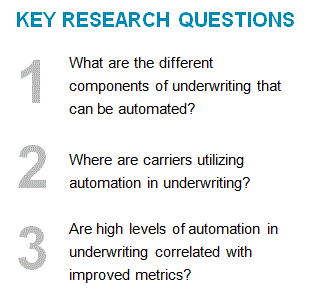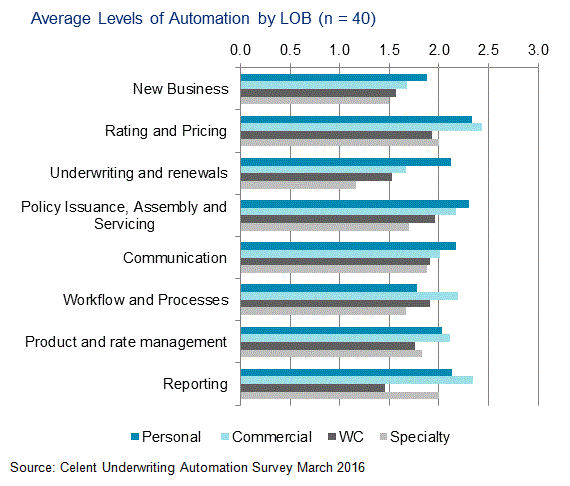Making Property/Casualty Underwriting Investments That Pay Off
Abstract
 |
Automation of underwriting processes carries the promise of improved results, but can come at a significant cost. So where is the industry today, and when does it make sense to invest in automation? Underwriting is at the core of the insurance industry. The processes of selecting and pricing risk and the additional operational processes necessary to deliver a policy and provide ongoing services are essential to the profitability of a carrier. Over the last few years, carriers have been heavily engaged in replacing core policy administration systems and increasing the automation of their underwriting processes. |
Automating processes can be expensive because of both the hard costs of purchasing technology, implementing technology, and changing processes and the soft costs. Change can be hard on both underwriting staff and on the agents who receive the output of the underwriting process.
So when does it make sense to invest in automation? Are there pieces of the underwriting process that, when automated, are more likely to improve results? Celent investigates these questions to provide guidance to carriers that are trying to prioritize their efforts.
“With this report, we wanted to understand the actual state of underwriting automation in the insurance industry,” says Karlyn Carnahan, a research director with Celent’s Insurance practice and author of the report. “Are carriers living up to the hype that implies that virtually every carrier out there has automated every step of the process? Or is the progress slower? Are carriers with older systems at a disadvantage? Do high levels of automation actually result in better financial results? The answers to these questions can help carriers plan where to invest their automation dollars.”
To understand what top carriers are doing in this area, Celent conducted a survey. The process of underwriting was broken into 26 logical components of work. For each component, three levels were defined, ranging from little to significant levels of automation. Carriers can use this report as a diagnostic tool by comparing their scores to the benchmarks.


